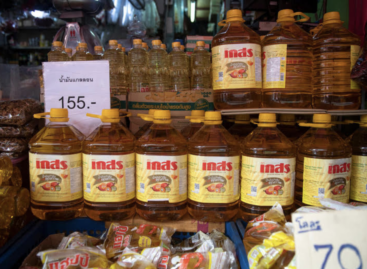Identification, control, product suggestion: the future has arrived
One of the key drivers of consumer behaviour is distrust that is rooted in fear from the unknown. Providing consumers with precise and credible information could alleviate this distrust – with the help of new information technology solutions and devices. RFID is one of the most modern identification and tracking systems used in food industry and retail. In Hungary, it is not widely used yet; barcodes are still more attractive because they are also reliable and less costly than RFID. Despite their high cost, RFID tags/chips are better suited for storing information, e.g. in warehouses or in wet production facilities. Production tracking RFID applications is increasingly popular, according to CSB-System Kft. They say that retail applications can be successful if each element of the logistics chain is able to read information encoded in RFID tags. Hardware and software suppliers also play a crucial role in popularising RFID technology, since well-functioning and secure systems are needed for using radio frequency identification effectively. Bizerba Mérleg Hungária Kft., whose main profile is food industry scales and labelling device production, also developed a production tracking, accounting and company management system, so they can now offer complete solutions to their customers. If a company’s strategy involves developing an RFID solution, they have to choose their present IT solutions accordingly. M.I.T. Systems Kft. developed a revolutionary RFID reader that works through Bluetooth communication. Reading distance is 2-5 cm, but the device woks with two mall batteries for several hours. From May 2009, Synergon Retail Systems Kft. distributes electronic shelf label ‘taggy esl’. It is an innovative wireless system that displays the daily prices and other characteristics of products; it connects to an IT system and receives and sends information continuously e.g. data can be imported from cash registers’ database. Szintézis Informatikai Zrt. distributes another type of electronic shelf label, Pricer ESL that is much more than a simple price display. From ESL LCD it can be read how many products were sold in a give period of time – which tells a lot about price promotions’ effect on sales; or about the number of products on the shelves and in the warehouse. Szintézis’ ESL system realises a 2-way data transfer: if a product’s price changes in the central system, the new price appears on the shelf display at once. Dániel Szabó, the company’s expert told that investing in an ESL system returns soon, even at small companies: presently their system works in pharmacies, DIY stores and petrol stations. Wincor Nixdorf Magyarország Kft.’s breakthrough was in 2009, when TESCO started using their shelf label in its Budaörs and Százhalombatta hypermarkets – managing director Attila Nagy informed us. Their system uses short wave radio frequency technology, developed by French company SES. Richárd Járai from Laurel Számítástechnikai Kft. told us that in 2010 they would introduce HOLOBOX, a 3D interactive display that creates realistic holograms. They cooperate with several companies, for instance in mobile marketing or in stock management (with retail chain Coop). Self service systems: in general we can say that there are no one-size-fits-all solutions. Self service cash registers will attract Hungarian shoppers as well – after a period of accommodation. Szintézis Zrt. plans to introduce automatic cash registers in a few stores this year and they also have a system for restaurants that runs on Windows. Mobisol Kft. supports sales processes by tailor-made PDA systems – not only in sales, but also in registering survey or merchandising data or consumers’ opinion. M Factory Zrt.’s mobile marketing advisor, Kornél Huber informed us that their mobile coupon application would be launched in the spring of 2010. A great advantage of mobile coupons is that the number and place of coupons used are measurable. This way a database is going to be generated which can be used to design more effective promotions. Their solution for using coupons does not require significant technical development from the retailers’ side.
Related news
Related news
Corporate leaders’ commitment to sustainability at record level
According to the latest data from the K&H Sustainability Index,…
Read more >FAO food price index rose slightly in June due to higher prices of meat, dairy products and vegetable oils
The Food and Agriculture Organization of the United Nations (FAO)…
Read more >What can cause the price of a wine to increase tenfold?
There are fewer of them worldwide than the number of…
Read more >



